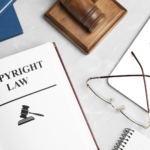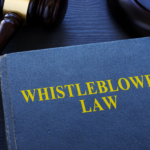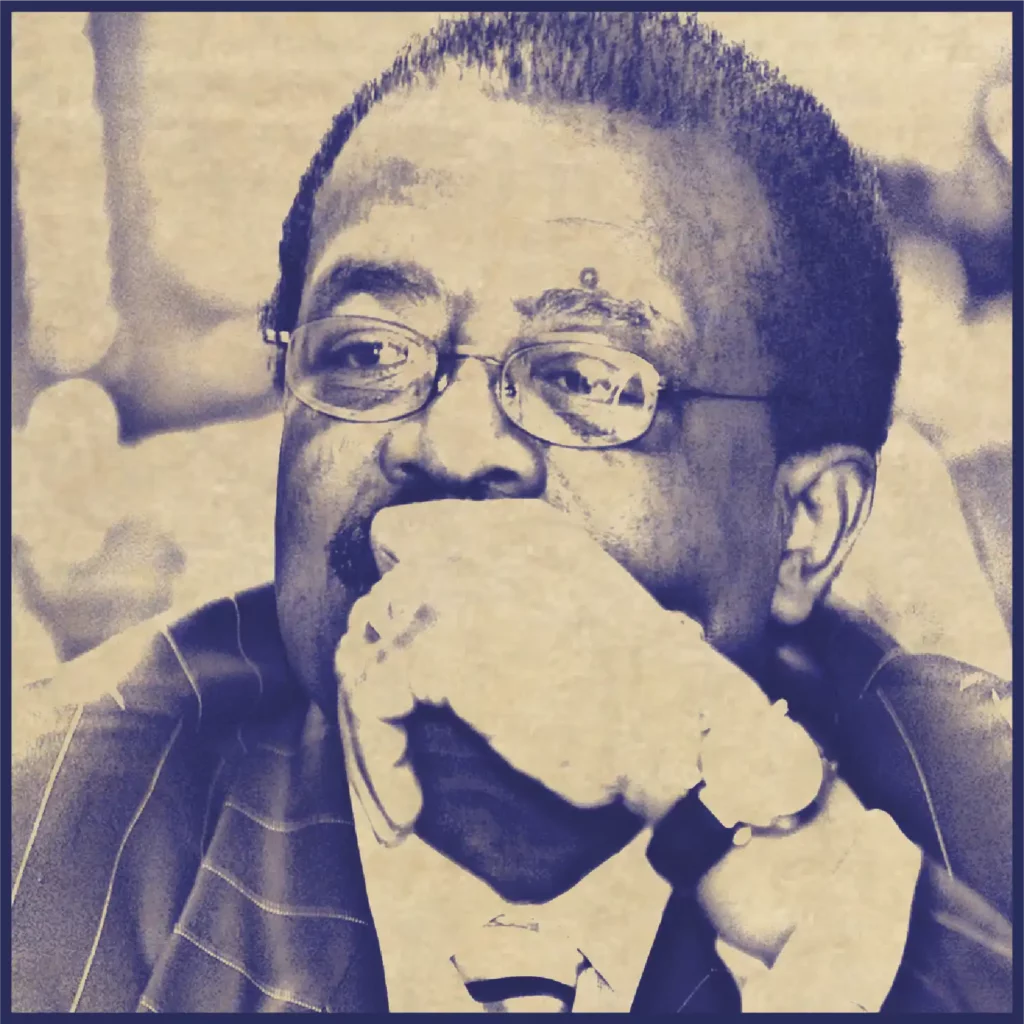In the United States, the development of police closely followed England. Early colony policing was practiced in two forms: informal and communal, known as the “Watch” system, or private-for-profit policing, called “The Big Stick.” The watch system included area volunteers whose primary responsibility was to notify of danger. Boston organized a night watch in 1636, New York in 1658, and Philadelphia in 1700. However, this was not an effective method of crime control. Watchmen frequently drank or slept on duty. Many “volunteers” attempted to avoid military service, were ordered by draft into service by their town, or were working watch services as a sort of punishment. In 1833, Philadelphia organized the first day watch. Then in 1844, New York initiated a day watch as an addition to its new police force. The growing watch system was a system of official law enforcement officers, constables, typically funded by the fee system for warrants.
In the United States, the development of police closely followed England. Early colony policing was practiced in two forms: informal and communal, known as the “Watch” system, or private-for-profit policing, called “The Big Stick.” The watch system included area volunteers whose primary responsibility was to notify of danger. Boston organized a night watch in 1636, New York in 1658, and Philadelphia in 1700. However, this was not an effective method of crime control. Watchmen frequently drank or slept on duty. Many “volunteers” attempted to avoid military service, were ordered by draft into service by their town or were working watch services as a sort of punishment. In 1833, Philadelphia organized the first day watch. Then in 1844, New York initiated a day watch as an addition to its new police force. The growing watch system was a system of official law enforcement officers, constables, typically funded by the fee system for warrants.
Constables had several non-law enforcement functions to do as well, such as serving as land surveyors and checking the correctness of weights and measures. In numerous cities, they had the duty of overseeing the actions of the night watch. These processes of policing lasted much after the American Revolution. In the 1830s, the first concept of a centralized municipal police department arose. Boston established the first American police force in 1838. New York City followed this in 1845, Albany, NY and Chicago in 1851, New Orleans and Cincinnati in 1853, Philadelphia in 1855, and Newark, NJ and Baltimore in 1857. All significant American cities possessed municipal police forces by the 1880s. These latest police systems shared related characteristics:
New U.S. police forces had two primary components: they remained notably corrupt and blatantly brutal. Local politicians remained in control of the police. In most areas, the domestic political party ward leader elected the police executive in command of the ward leader’s community. The ward leader generally was the neighborhood tavern owner, occasionally the community vendor for gambling and prostitution, and commonly the governing authority over the area’s youth gangs who were utilized to intimidate adversary party voters. With bad habits, political corruption, and coordinated violence, it was known that the police were corrupt. Police regularly accepted payoffs to allow for illegal drinking, prostitution, and gambling. They organized expert criminals such as thieves and pickpockets to lend protection in exchange for information or bribes. They also actively participated in vote-buying and ballot-box-stuffing. Faithful political operatives shifted into police officers with no qualifications and scarce training, if any. Police department promotions were not earned. Instead, they were sold. Officers drank alcohol while patrolling, guarded vice operations, and were keen to employ overbearing force. These new American police departments faced three controversies:
Local traders and business people urged the advancement of community policing fancied uniformed police. The reasoning was for easy distinguishment by those seeking assistance and for a prominent police occupancy on community streets. Some officers opposed wearing a uniform, believing that it would induce ridicule and present themselves as easily identifiable targets for violence. Police officers began bearing firearms despite the public’s concern that doing so gave too much strength to the police and state. Departments officially armed their police force after officers had informally carried firearms themselves.
In the 1830s and 1840s, use-of-force in an arrest was as questionable as it is today. Because officers were primarily involved in enforcing laws of public order against drunkenness and gambling, harassing labor organizers, and surveilling freed slaves and immigrants, the public’s opinion supported restrictions on use-of-force. However, the benefit of an armed presence authorized to apply deadly force served the interests of economic elites wanting established police departments. The forces were deemed essential because the “organizations intervened between the propertied elites and propertyless masses who were regarded as politically dangerous as a class.” From the start, policing in the United States has been closely tied to the American political economy’s demands and needs.
As for the present day, it appears probable that a new emphasis on technology and science, expressly concerning surveillance of citizens, and on neighborhood pacification through policing in communities, are all fated to replay the defeats of history as the methods of the future. Today’s stories of police brutality are not a recent phenomenon.
NAACP
In 1963, Martin Luther King, Jr. said, “There are those who are asking the devotees of civil rights, ‘When will you be satisfied?” These words continue to echo today following a lengthy history of brutal confrontations between black Americans and police officers. “We can never be satisfied as long as the Negro is the victim of the unspeakable horrors of police brutality.”
“This idea of police brutality was very much on people’s minds in 1963, following on the years, decades really, of police abuse of power and then centuries of oppression of African-Americans,” said William Pretzer, senior history curator at the Smithsonian museum.
Live streams and social media have advanced police brutality incidents past the black community and within the mainstream media. “Modern technology allows, indeed insists, that the white community take notice of these kinds of situations and incidents,” Pretzer said.
As technology has grown, so has the tools of law enforcement. Departments with heavy militant equipment are displayed as standard in American neighborhoods. “What we see is a continuation of an unequal relationship that has been exacerbated, made worse if you will, by the militarization and the increase in fire power of police forces around the country,” Pretzer declared. According to Pretzer, the resolution lies in fixing troubled police-community relationships and abolishing social inequalities.
If you've been the victim of police brutality, a personal injury lawyer can help. Please call The Cochran Firm's 24/7 call center today at 1-800-THE-FIRM (673-1555) or send us a message on our website.
Deaths by police officers are progressively prominent as a political issue. After examining records from the Chicago Police Department from the 1870s to the 1920s, historian Jeffrey S. Adler found that these killings are not new incidents. During the times records cover, police in Chicago killed 307 individuals, factoring one in eighteen killings in the city.
During the late nineteenth century, police officers’ duties in Chicago were to keep order, work alongside notably corrupt officials, and put down labor unrest. Officers maintained leeway on how to perform these expectations. In Illinois, criminal law justified using deadly force in self-defense, to stop riots that endanger police officers, or to prevent suspects from fleeing.
However, throughout the first dates of Adler’s examinations, police brutality was limited mainly to the abundant use of clubs. Chicago Police Department officers killed around 49 individuals from 1875 to 1900. This number increased to 65 during the first decade of the 20th century. In the 1910s, it grew to 153. An increase in violent crime helps to explain the growth of police brutality. Chicago’s homicide rate nearly doubled from 1890 to 1920. Additionally, the variety of brutality changed. During the 1870s and ’80s, most killings resulted from drunken fights. By 1900, homicides were more prone to result from robberies involving numerous middle-class victims. 3% of Chicago’s population and 21% of murder by police victims between 1910 and 1920 were Black Americans.
Adler records that amid political tension to exert force upon criminals and officers’ responses to “a racially different and seemingly more alien, dangerous class of criminals,” the police frequently fired at suspects to prevent escape. This was the sole explanation that the police provided for firing weapons in 41% of police killings from 1890 to 1920. They killed loiterers, petty thieves, and purse-snatchers. Police also murdered bystanders by discharging their weapons into crowds or confusing the identity of a suspect, which accounted for one in ten killings by police.
A police officer killed a child by shooting him while he played with friends in 1910 after confusing his identity with a criminal. The police chief disclosed that the child “probably was large for his age.” This sort of response is comparable to those we listen to today.
Throughout the 1950s and 60s, the civil rights movement confronted police brutality and additional racial discrimination and segregation, alongside the resistance to the Jim Crow methods in the South. In Detroit, black Americans faced discrimination through a segregated housing market and public schools, unfair hiring methods, and racist policing.
Brutality placed on black Americans by police in Detroit and other places in the Jim Crow North was rooted in liberal police of racial control. The Detroit Police Department sometimes acted unlawfully, such as illegal investigative arrests, racial profiling, and fiercely resisted civil rights demands for a civilian review board to investigate police brutality. Additionally, the department illegally put labor and civil rights organizations, including the NAACP, under political surveillance through the "'Red Squad,' a parallel to the Jim Crow South that has received insufficient attention."
“We can never be satisfied as long as the Negro is the victim of the unspeakable horrors of police brutality,” said Martin Luther King, Jr. during his speech at the 1963 March on Washington. “We want an immediate end to police brutality and murder of black people,” was included within the ten points in the 1966 Black Panther Party Platform.
In March of 1973, Robert Hoyt rear-ended Raymond Peterson on a freeway in Detroit, Michigan. Hoyt worked late at an automobile company and allegedly fell asleep at the wheel while driving home. Peterson, an officer in an unmarked vehicle, believed the crash was a planned act. Gary Prochorow, Peterson's partner, observed the collision while also driving in his own unmarked car.
Prochorow also thought the accident was deliberate. After yelling out of his window for Hoyt to pull over, Prochorow shot at Hoyt from his unmarked car. Hoyt left the freeway in a panic with the two officers following closely behind. He eventually had no option but to surrender after passing an exit ramp. Peterson exited his vehicle and believed Hoyt reached for a gun under his seat. "My reaction was instinctive, sharp like a scalpel," Peterson recollected. "Boom. He went down."
However, Hoyt had no weapons. Peterson took out a knife, cut his jacket, cleaned the blade of fingerprints, and tossed it near the crime scene. Hoyt was shot in the stomach and later declared dead upon arrival at the hospital.
In a 1971 Detroit Free Press profile, Peterson was described as seeming "more like a radical college professor or folk singer than what he is—a Detroit policeman who has probably been part of more violence in recent months than any other cop in the country." Hoyt was the tenth firearm death that Peterson appeared at over two years. He killed six individuals and injured five.
STRESS, as the police unit became known, revealed to be an excessive and lawless force. In 1961, Peterson became an officer with the Detroit Police Department at 25 years old. During his first several years, he was responsible for six injuries and earned 41 citations and commendations for his work. Peterson was selected in 1971 to enter an elite, profoundly undercover unit within the department. The group fought crime on the street but grew notorious in distinct Detroit's neighborhoods, resembling a killer crew. As information about Peterson's kills spread, he was scolded by some of the city's residents and supported by his associates.
In March of 1991, four police officers were captured on film beating Rodney King, a taxi driver, after pursuing him through Los Angeles, California. The video and events that followed horrified the city and shook the nation.
This footage of police brutality was one of the first of its kind, and permanently altered dialogue about race and police in the United States.
King was intoxicated, speeding, and attempted to evade LAPD officers. Various units and a helicopter tracked him, eventually forcing the man to stop fleeing. The footage captured by George Holliday, a bystander nearby, exposes the officers using tasers, kicking and beating King with batons more than 50 times.
"King claims, and several witnesses support him, that he never resisted," Jerry Bowen, CBS News correspondent, announced. "Twenty-five-year-old Rodney King showed his injuries to reporters -- the bruises, broken leg, and the scar from the stun gun which jolted him with 50,000 bolt shocks."
In April of 1992, officers Timothy Wind, Laurence Powell, Stacey Koon, and Theodore Briseno were put on trial and acquitted by a predominantly Caucasian jury. The next few days in Los Angeles were filled with arson, riots, looting, and excessive violence. In a press conference held by Rodney King, he pleaded, "can we all get along?" By the end of the riots, there were more than 2,000 injuries and 55 deaths.
President George Bush declared the officers' acts as "sickening" and opposed the violent riots, calling rioters "revolting." King later settled for $3.8 million and had several confrontations with police as years passed. In 2011, he was caught driving under the influence. King drowned in his pool in 2012 with evidence of marijuana, PCP, alcohol, and cocaine in his system.
In Missouri, St. Louis law enforcement officer Jason Stockley killed Anthony Lamar Smith in 2011 with a firearm after he fled. Stockley speculated the man was dealing narcotics. In 2016 after Stockley was recorded saying he was "going to kill this motherf---er," he was charged. In late 2017, he was acquitted of first-degree murder. Stockley said he saw a firearm before he started shooting, which was justified in the law's eyes.
Stockley's acquittal brought about violent protests in St. Louis that introduced police units dressed in riot gear after rioters began to throw rocks and break windows. Protesters marched to St. Louis Mayor Lyda Krewson's house but were stopped by officers. The units resorted to rubber bullets shot at the crowd, along with making hundreds of arrests.
In 2013, the police department settled a lawsuit for wrongful death with the family of Smith for $900,000. However, officer Stockley never received time in jail. A judge in 2018 approved the lawyer for Smith's family to reopen discovery in the case after discovering the defendants had reserved evidence of DNA that showed Stockley had placed a firearm in Smith's vehicle. The family was granted an additional $500,000 one year later.
In Louisiana, two Baton Rouge Police Department officers took Alton Sterling down to the ground following an anonymous call reporting the man for standing outside of a store to sell CDs. After yelling that Sterling had a firearm, Blane Salamoni, one of the officers, shot him dead. The police officers insisted Sterling was a threat, believing that he reached for his gun. However, the video shows Sterling supposedly motionless before being shot. Protests began in Baton Rouge following Sterling's death, where various demonstrators were arrested. The Department Of Justice initiated an investigation of civil rights into the incident. Salamoni was fired, but the officers were not charged.
In Minnesota, employees of a store in Minneapolis called police because resident George Floyd attempted to use counterfeit money. Derek Chauvin, alongside three other officers, intensified the incident in an attempt to arrest Floyd. With more than eight minutes of Chauvin pinning Floyd with a knee to the neck, footage from bystanders shook the nation. Prior to his death, Floyd repeatedly yelled that he couldn't breathe. An autopsy later showed "asphyxiation from sustained pressure." Another report associated heart disease to his death. All involved officers were fired and charged. Protests, violent riots, looting, murders, and arson spread quickly across America, evolving into a public uprising over police brutality. Minneapolis city council members pledged to disband the police department.
Born in Shreveport, LA, Johnnie Cochran moved with his family to California. With an undergraduate degree in Business Administration from the University of California at Los Angeles, Johnnie attended Loyola Law School in Los Angeles, where he received his Juris Doctor. Johnnie's early legal career began in the City Attorney's Office in Los Angeles in 1963, where he was assigned to the criminal division. After several years, he entered private practice and founded a Los Angeles-based law firm where he developed a practice handling a substantial volume of both civil and criminal cases. Despite his notoriety and list of famous clients and friends, Johnnie Cochran never lost sight of his mission to bring access to justice to people from all walks of life. While expanding his firm to a national platform, Mr. Cochran knew he would have to surround himself with like-minded attorneys who shared his commitment to justice, attorneys he could trust to continue his legacy.
Most police officers are committed and ethical. They work a difficult, life-threatening job, and their days are extraordinarily stressful. However, police officers also exercise a great deal of control over the lives of the people they interact with, and an abuse of this power is particularly egregious. The personal injury lawyers at The Cochran Firm have experience helping the innocent victims of police brutality pursue justice and compensation.
The physical, emotional, financial, and legal consequences of police brutality can be staggering. We place a lot of trust in the police, and a betrayal of that trust should not go unacknowledged or un-pursued. Our police brutality lawyers will not allow that.
At The Cochran Firm, we will be there for you. Our police brutality lawyers will listen to your story and advise you on how best to proceed with your claim.
If you've been the victim of police brutality, a personal injury lawyer can help. Please call The Cochran Firm's 24/7 call center today at 1-800-THE-FIRM (673-1555) or send us a message on our website.
Contact us today for a Free Consultation





